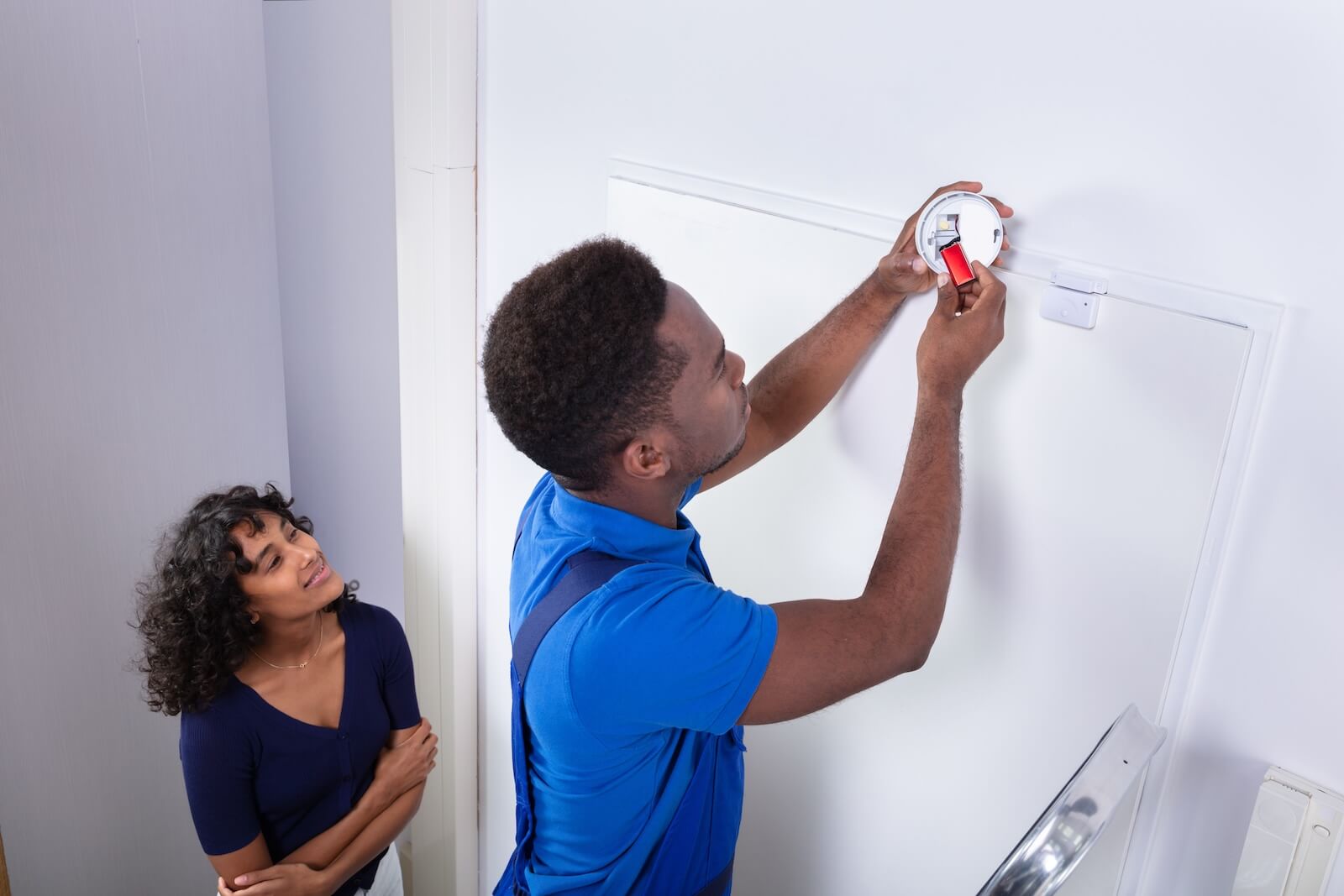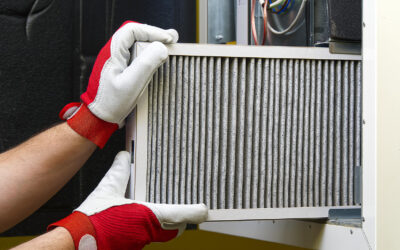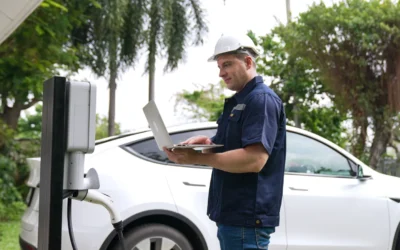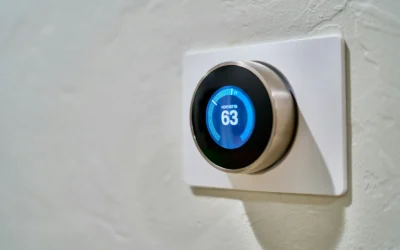Carbon monoxide (CO) is often referred to as the “silent killer” — and for good reason. It’s an odorless, colorless, and tasteless gas that can cause serious illness or even death if inhaled in large quantities. Carbon monoxide is produced when fuels like gas, wood, coal, or oil don’t burn completely. Common household appliances such as furnaces, gas stoves, water heaters, and fireplaces can all be sources of CO if not properly maintained.
Because carbon monoxide poisoning is so difficult to detect without a dedicated alarm, recognizing the signs of a leak is critical for protecting your home and loved ones. In this blog, we’ll explore seven common signs of a carbon monoxide leak, along with tips on how to prevent one in the first place.
1. Symptoms of Carbon Monoxide Poisoning
The most immediate — and dangerous — sign of a carbon monoxide leak is physical symptoms of poisoning. CO binds with hemoglobin in the blood, preventing oxygen from being delivered to cells and organs.
Common symptoms include:
- Headaches
- Dizziness or lightheadedness
- Nausea or vomiting
- Shortness of breath
- Confusion or disorientation
- Blurred vision
- Chest pain
- Loss of consciousness
Because these symptoms are so similar to the flu or food poisoning, many people don’t realize they’re experiencing CO poisoning until it becomes severe. A key clue is that symptoms improve when you’re outside or away from home and worsen when you return indoors.
2. Symptoms in Pets
Your pets may show signs of carbon monoxide poisoning before you do. Smaller animals are generally more sensitive to gas exposure.
Signs to watch for in pets include:
- Lethargy or drowsiness
- Uncoordinated movements
- Difficulty breathing
- Vomiting
- Loss of consciousness
If your pets suddenly become sick and there’s no clear explanation, especially during the colder months when heating systems are running, it could be a red flag that something is wrong with your indoor air.
3. Yellow or Flickering Flame on Gas Appliances
Gas appliances should produce a steady blue flame during normal operation. A yellow or flickering flame can indicate that the appliance isn’t burning fuel completely, which may lead to the release of carbon monoxide.
This is especially important to monitor:
- Gas stoves
- Furnaces
- Gas fireplaces
- Boilers
If you notice discolored flames or soot buildup around burners, turn off the appliance and contact a professional immediately.
4. Excessive Condensation on Windows Near Fuel-Burning Appliances
Excess moisture or condensation on windows and walls, especially in rooms with gas appliances, can be a sign of improper ventilation. When combustion gases aren’t properly vented outdoors, the excess moisture they produce can collect on cooler surfaces.
This is not a guaranteed sign of carbon monoxide, but it’s worth investigating if paired with other indicators (like flu-like symptoms or yellow flames).
5. Unusual or Burning Odors (Despite CO Being Odorless)
While carbon monoxide itself is completely odorless, a malfunctioning appliance producing CO may also emit burning smells, smoke, or a faint exhaust odor from nearby components or clogged vents.
Don’t ignore unusual smells coming from:
- Gas stoves
- Furnaces
- Water heaters
- Chimneys or flues
If something smells off, even faintly, it could indicate incomplete combustion and potential CO buildup.
6. Stale or Stuffy Indoor Air
Poor indoor air circulation, especially in homes with little ventilation, can increase the risk of carbon monoxide accumulation. If your home starts to feel unusually stuffy, humid, or musty, and you’re experiencing other symptoms, it may be a sign that combustion gases aren’t being exhausted properly.
A blocked chimney, damaged venting, or a malfunctioning exhaust fan can all contribute to poor air circulation and CO risk.
7. Malfunctioning or Missing Carbon Monoxide Detectors
The best and most reliable way to detect a carbon monoxide leak is with a working CO detector. If your home doesn’t have detectors or the existing ones are chirping, damaged, or outdated, you may not be protected in the event of a leak.
Tips:
- Install CO detectors on every level of your home, especially near bedrooms and fuel-burning appliances.
- Test alarms monthly and replace batteries twice a year.
- Replace the detectors themselves every 5–7 years or according to the manufacturer’s recommendation.
A properly functioning CO detector can alert you to a problem before symptoms ever appear — saving lives in the process.
What Causes Carbon Monoxide Leaks?
Several household sources can produce carbon monoxide if they are damaged, improperly installed, or poorly maintained:
- Faulty or cracked heat exchangers in furnaces
- Blocked chimneys or flues
- Gas or wood-burning fireplaces without proper ventilation
- Gas stoves or ovens left on for extended periods
- Idling vehicles in attached garages
- Generators or gas-powered tools used indoors
Regular inspections and professional maintenance are critical to keeping these systems safe.
How to Prevent Carbon Monoxide Leaks
Being proactive is the best defense against a carbon monoxide emergency. Here’s how you can reduce your risk:
- Schedule annual HVAC and appliance maintenance to ensure safe operation.
- Install and test CO detectors regularly.
- Keep vents, chimneys, and flues clear of obstructions like debris, nests, or snow.
- Never use outdoor appliances indoors, such as charcoal grills, gas generators, or kerosene heaters.
- Ensure adequate ventilation in areas with fuel-burning appliances.
- Don’t idle your vehicle inside the garage, even with the door open.
Don’t Let the Silent Killer Go Undetected
Carbon monoxide is colorless and odorless. It is potentially deadly but also preventable. By knowing the signs of a leak, like physical symptoms, unusual appliance behavior, condensation buildup, and poor ventilation, you can take swift action to protect yourself and your loved ones.
The best way to stay safe is to combine awareness with prevention. Install reliable carbon monoxide detectors, schedule regular furnace and HVAC maintenance, and never ignore warning signs that something may be off.
If you suspect a carbon monoxide leak or want to make sure your home is protected, Steel T Home Services is here to help. Our licensed HVAC professionals can inspect your heating systems, repair ventilation issues, and ensure your home is running safely and efficiently.Contact us today to schedule a safety inspection — and breathe easier knowing your home is protected.
Steel T Home Services is Denver's choice for HVAC, plumbing & electrical needs. With over 40 years of experience in serving our valued customers’ needs, Steel T is committed to providing unparalleled comfort to your home.



